Related Research Articles

Ubbe Ert Iwerks, known as Ub Iwerks, was an American animator, cartoonist, character designer, inventor, and special effects technician, known for his work with Walt Disney Animation Studios in general, and for having worked on the development of the design of the character of Mickey Mouse, among others. Born in Kansas City, Missouri, Iwerks grew up with a contentious relationship with his father, who abandoned him as a child. Iwerks met fellow artist Walt Disney while working at a Kansas City art studio in 1919.
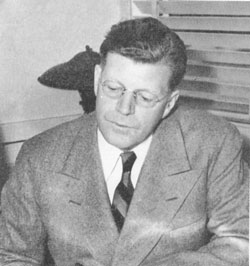
Frederick Clinton Quimby was an American animation producer and journalist best known for producing the Tom and Jerry cartoon series, for which he won seven Academy Awards for Best Animated Short Films. He was the film sales executive in charge of the Metro-Goldwyn-Mayer cartoon studio, which included Tex Avery, Droopy, Butch Dog, Barney Bear, Michael Lah and multiple one-shot cartoons, as well as William Hanna and Joseph Barbera, the creators of Tom and Jerry.

The golden age of American animation was a period in the history of U.S. animation that began with the popularization of sound synchronized cartoons in 1928 and gradually ended in the 1960s when theatrical animated shorts started to lose popularity to the newer medium of television. Animated media from after the golden age, especially on television, were produced on cheaper budgets and with more limited techniques between the late 1950s and 1980s.

The Cat Concerto is a 1947 American one-reel animated cartoon and the 29th Tom and Jerry short, released to theatres on April 26, 1947. It was produced by Fred Quimby and directed by William Hanna and Joseph Barbera, with musical supervision by Scott Bradley, and animation by Kenneth Muse, Ed Barge and Irven Spence and uncredited animation by Don Patterson.

Rhapsody Rabbit is a 1946 American animated comedy short film in the Merrie Melodies series, directed by Friz Freleng and featuring Bugs Bunny. The movie was originally released to theaters by Warner Bros. Pictures on November 9, 1946. This short is a follow-up of sorts to Freleng's 1941 Academy Award-nominated Rhapsody in Rivets, which featured the "Hungarian Rhapsody No. 2" by Franz Liszt. The "instrument" used to perform the "Hungarian Rhapsody" in Rhapsody in Rivets is a skyscraper under construction, while this short features Bugs playing the piece at a piano while being pestered by a mouse.
Charles Bear Mintz was an American film producer and distributor who assumed control over Margaret J. Winkler's Winkler Pictures after marrying her in 1924. The couple had two children, Katherine and William. Between 1925 and 1939, Mintz produced over 370 cartoon shorts.
The Fox and the Crow are a pair of anthropomorphic cartoon characters created by Frank Tashlin for the Screen Gems studio.
Color Rhapsody is a series of usually one-shot animated cartoon shorts produced by Charles Mintz's studio Screen Gems for Columbia Pictures. They were launched in 1934, following the phenomenal success of Walt Disney's Technicolor Silly Symphonies and Warner Bros.' Merrie Melodies. Because of Disney's exclusive rights to the full three strip Technicolor process, Color Rhapsody films were produced in the older two-tone Technicolor process until 1935, when Disney's exclusive contract expired.
Scrappy is a cartoon character created by Dick Huemer for Charles Mintz's Screen Gems Studio. A little round-headed boy, Scrappy often found himself involved in off-beat neighborhood adventures. Usually paired with his little brother Oopy, Scrappy also had an on-again, off-again girlfriend named Margy and a Scotty dog named Yippy. In later shorts the annoying little girl Brat and pesky pet Petey Parrot also appeared.

Screen Gems is an American brand name owned by Sony Pictures Entertainment, a subsidiary of Japanese multinational conglomerate, Sony Group Corporation. It has served several different purposes for its parent companies over the decades since its incorporation, initially as a cartoon studio, then a television studio, and later on as a film studio. The label currently serves as a film production that specializes in genre films, mainly horror.

The Year Without a Santa Claus is a 1974 stop motion animated Christmas television special produced by Rankin/Bass Productions. The story is based on Phyllis McGinley's 1956 book of the same name. It is narrated by Shirley Booth and starring the voices of Mickey Rooney, Dick Shawn and George S. Irving. It was originally broadcast on December 10, 1974, on ABC.
John Ryan Kinney was an American animator, director and producer of animated shorts. Kinney is the older brother of fellow Disney animator Dick Kinney.
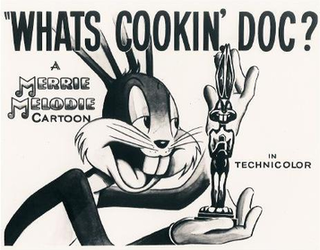
What's Cookin' Doc? is a 1943-produced, 1944 Warner Bros. cartoon in the Merrie Melodies series, directed by Bob Clampett, and stars Bugs Bunny. The short was also written by Michael Sasanoff, and was animated by Robert McKimson, along with uncredited work by Rod Scribner, Phil Monroe and Virgil Ross. The film was released on January 8, 1944.

Rudolph and Frosty's Christmas in July is an American-Japanese Christmas/Independence Day film produced by Rankin/Bass Productions, featuring characters from the company's holiday specials Rudolph the Red-Nosed Reindeer (1964) and Frosty the Snowman (1969), among others. It was filmed in Japan using the company's trademark "Animagic" stop-motion animation style. The film was originally a theatrical film released through Avco Embassy Pictures, where it ran for only 2–3 weeks and was considered a box-office flop. Later that year, on November 25, 1979, the film premiered on television in the US on ABC.
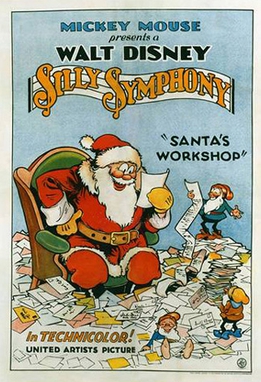
Santa's Workshop is a Disney short film directed by Wilfred Jackson, first released on December 10, 1932 in the Silly Symphonies series. The film features Santa Claus and his elves preparing for Christmas in Santa's workshop. A sequel, The Night Before Christmas, partially based on the 1823 poem "A Visit from St. Nicholas", was made the year after, portraying Santa leaving the toys in a house with nine children.

Christmas Comes But Once a Year is a 1936 animated short produced by Fleischer Studios and released on December 4, 1936 by Paramount Pictures. It is part of the Color Classics series. The cartoon features Professor Grampy, a character from the Betty Boop series; this is the character's only appearance without Betty. An edited version was featured during the Pee-wee's Playhouse Christmas Special in 1988, as the featured short shown by the King of Cartoons.
The Shanty Where Santy Claus Lives is a 1933 Christmas-themed Warner Bros. Merrie Melodies animated short film directed by Rudolf Ising. The short was released on January 7, 1933.
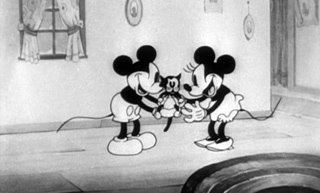
Mickey's Orphans is a 1931 American animated short film produced by Walt Disney Productions and released by Columbia Pictures. The cartoon takes place during Christmas time and stars Mickey Mouse, Minnie Mouse, and Pluto, who take in a group of disruptive and mischievous kittens. It is directed by Burt Gillett and features the voices of Walt Disney as Mickey and Marcellite Garner as Minnie. It was the 36th Mickey Mouse film and the twelfth of that year.
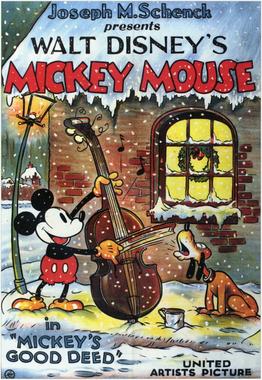
Mickey's Good Deed is a 1932 animated short film produced by Walt Disney Productions and released by United Artists. Set during the Christmas season and the contemporary Great Depression, the cartoon centers on Mickey's act of charity to bring Christmas to a poor family. The film was directed by Burt Gillett and features the voices of Walt Disney as Mickey and Pinto Colvig as Pluto. It was the 50th Mickey Mouse short, and the 14th of that year.
Jolly Little Elves is a 1934 animated short film by Walter Lantz. The cartoon was nominated at the 7th Academy Awards for Best Animated Short Film. The short was part of Lantz's Cartune Classics series.
References
- ↑ Crump, William D. (2019). Happy Holidays—Animated! A Worldwide Encyclopedia of Christmas, Hanukkah, Kwanzaa and New Year's Cartoons on Television and Film. McFarland & Co. p. 137. ISBN 9781476672939.
- ↑ Lenburg, Jeff (1999). The Encyclopedia of Animated Cartoons. Checkmark Books. pp. 67–68. ISBN 0-8160-3831-7.
- ↑ "Holiday Land - IMDb". IMDb .
- ↑ "7th Academy Awards Winners | Oscar Legacy | Academy of Motion Picture Arts and Sciences". Oscars.org. Retrieved 2014-04-08.